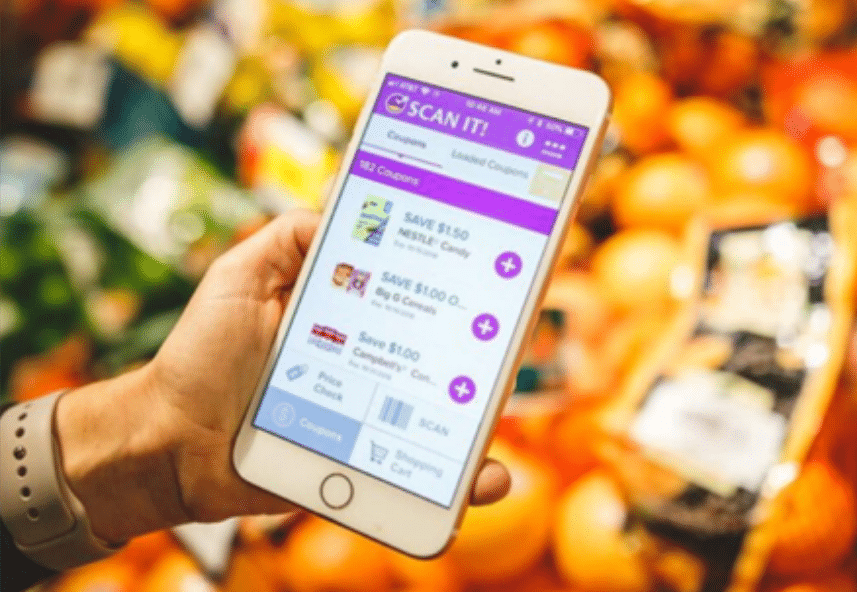
“San Diego Bans Digital Coupons From Grocery Stores,” one headline boldly declared. “Digital coupons banned under first-in-the-nation law,” another trumpeted.
Never mind that San Diego is not actually banning digital coupons. It’s not even planning to regulate most of them. But many consumers and commentators apparently wish someone would.
It’s been two weeks since the San Diego City Council unanimously voted in favor of a proposed ordinance that would require “any grocery store that offers digital discounts” to “make physical coupons for the digital price available to consumers upon request.”
The phrasing of the ordinance indicated that it also pertained to the hundreds of digital manufacturer’s coupons available on grocery stores’ websites and apps at any given time. That led critics to question how providing paper versions of all digital coupons would even be possible. The ordinance’s sponsor later clarified to Coupons in the News that his measure would “not regulate websites or apps. It simply ensures that if a digital discount is advertised in-store or in a weekly ad, it must also be available in a non-digital format.”
Now that’s different. But why let the facts ruin a good story? As word spread that San Diego was restricting “digital-only coupons” (or “banning digital coupons” outright), digital coupon critics disregarded the details, and pounced.
Newspaper editorials in San Diego and beyond have cheered the measure, or at least what they believed the measure to be. “Close the digital coupon divide,” Santa Rosa, California’s Press Democrat urged. “Not everyone has access to coupons these days. Digital coupons have replaced printed ones.” The San Diego Voice & Viewpoint called for a “Fair Checkout For All,” decrying “food coupons gatekept behind smartphone apps.” And halfway across the country, Arkansas’ Texarkana Gazette said “many grocery chains limit or no longer offer traditional printed coupons. If shoppers want a discount they have to go online.”
Some of these arguments are a bit hyperbolic – paper coupons do still exist, after all. And for the most part, it’s manufacturers and not retailers who are offering them. Nevertheless, the critics do have a point. Seniors, lower-income shoppers and others who lack digital access or aptitude often feel left behind as their digitally-savvy, smartphone-toting counterparts get discounts that the digitally-disconnected don’t.
But when this whole debate began a few years ago, it had little to do with digital coupons at all. In an open letter to major grocery chains, a coalition of consumer groups called for an end to “digital discrimination.” But “to be clear,” they clarified, “we are focused on digital versions of store-issued coupons and featured sale items” and not “digital versions of manufacturers’ coupons.”
So while their campaign was focused narrowly on advertised promotional prices that are only available digitally, it ended up providing fed-up shoppers with an opening to vent about all types of digital discounts – including digital coupons. Several states proposed legislation to mandate “paper versions of all digital coupons,” cheered on by critics who relished the opportunity to announce everything they find objectionable about digital coupons.
And that venting has only heightened in the aftermath of San Diego’s attempt to regulate them. “Most agree that digital coupons are a pain and people without smartphones should have access,” one shopper wrote in a recent letter to the editor. “I have been in line waiting until someone finally finds the digital coupon on their phone. It holds up everyone,” another complained. “It takes time to wade through long lists of available coupons in an app, searching for the handful that might interest a family doing its weekly shopping,” that Press Democrat editorial read.
Grocery industry representatives have emphasized that coupons are supposed to require some effort. They’re a marketing tool, not an entitlement. They’re meant to entice you to buy a product, not to lower the price for anyone who asks. But many critics appear to believe otherwise. “All consumers deserve equal access to money-saving deals,” the Texarkana Gazette editorial argued. An editorial in California’s Mendocino Voice said “making the lowest prices available only to those who can whip out their phones and scan does not seem like progress.” And the Press Democrat called for “universal access to coupons.”
In the pre-digital age, few people seriously argued that paper coupons should be automatically applied for everyone because not everyone subscribed to the Sunday newspaper. So what is it about digital coupons that has hit such a nerve?
One could argue that grocery chains brought this problem upon themselves – blurring the line between digital coupons you need to seek out and clip, and promotional prices that are prominently advertised and available to everyone. More and more, store circulars and shelf tags these days feature bold “after coupon” prices that look like sale prices, but only in the small print is it disclosed that you need a digital coupon to get that price.
The coupon industry has also moved with increasing rapidity toward digital-only offers, reasoning that’s what the majority of shoppers want. But a not-insignificant minority doesn’t. And this once-silent minority has become increasingly vocal. And with more legislators listening, they now have influential allies who are in a position to do something about it.
To these critics, the very real difference between digital deals and digital coupons, between discounts offered by stores and coupons offered by manufacturers, is nothing more than semantics. Digitally-disengaged shoppers – and, increasingly, many lawmakers – just want everyone to have access to the same lower prices that others pay. How stores and manufacturers do it doesn’t matter to them. “Adjust and adapt,” an Escondido Times Advocate columnist wrote. “No biggie.”
Some stores are scrambling to do just that, offering solutions like in-store coupon kiosks for shoppers lacking their own digital devices, or having the customer service desk help shoppers load digital deals to their loyalty account. It remains unclear whether such solutions will get lawmakers to back off, or whether it’s simply too late.
So far, all of the statewide efforts to regulate digital deals have failed to become law. San Diego’s version, however, is very likely to become law in the coming weeks, albeit in a modified version that doesn’t actually require stores to offer paper versions of all digital coupons, and doesn’t “ban digital coupons” as some have claimed.
This toned-down ordinance may not end up doing everything that digital coupon critics want. But it would still be the first of its kind to end up on the books – and some don’t want it to be the last. “California lawmakers should consider a statewide reform,” the Press Democrat editorial urged. If not, “local counties ought to take up the cause.”
So this issue – and the digital coupon backlash – is unlikely to go away. And if these consumer concerns are not adequately addressed, more legislation is likely to be proposed in even more states, and counties, and cities. San Diego may not really be banning digital-only coupons. But unless the current sentiment changes, it may be only a matter of time until someone actually does.
Image source: Stop & Shop











San Diego’s move to ensure digital coupons are available in paper format is a step toward addressing digital exclusion. While critics argue it’s unnecessary, it’s clear that not all shoppers have equal access to digital deals. This ordinance could set a precedent for other cities to consider broader solutions for fair coupon access.